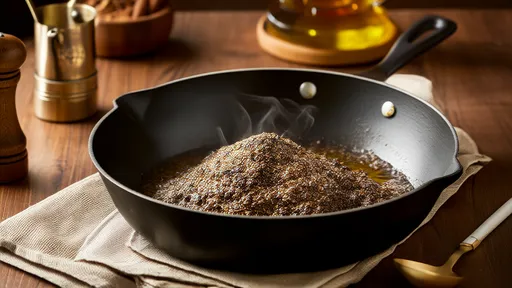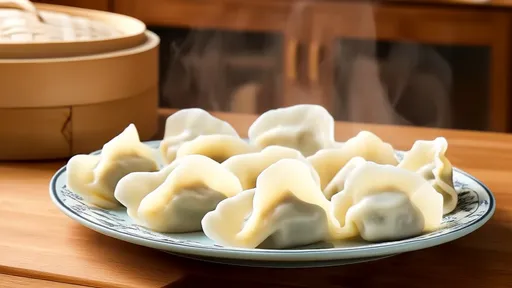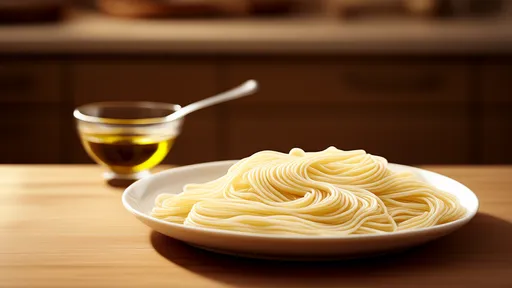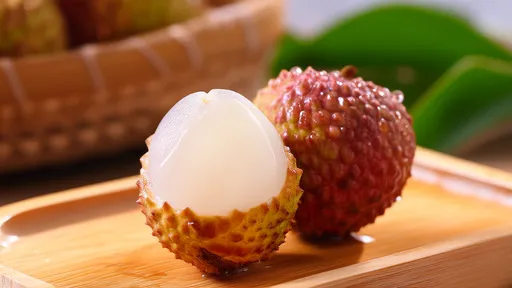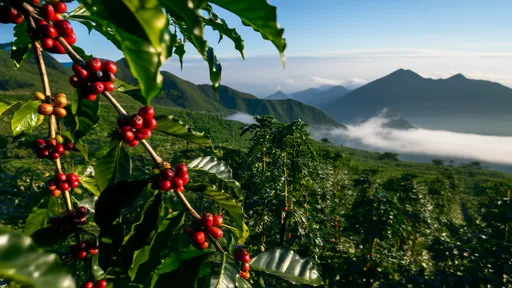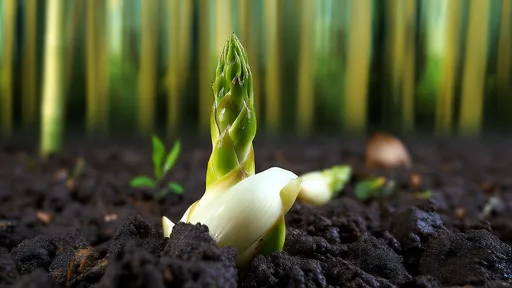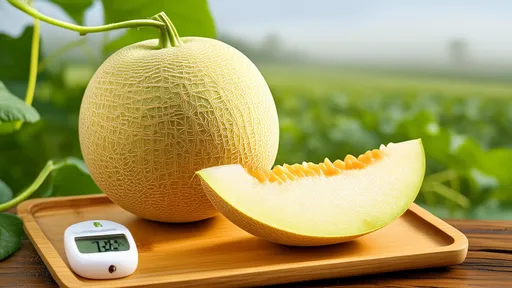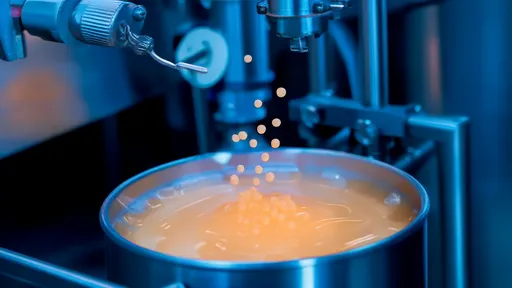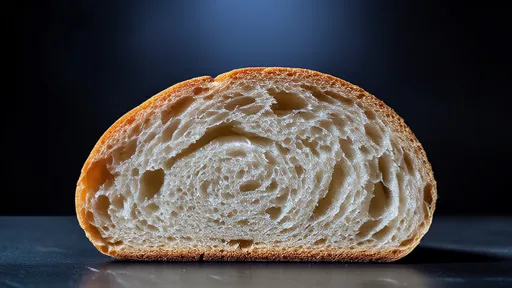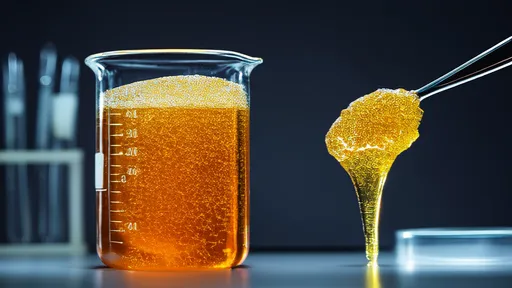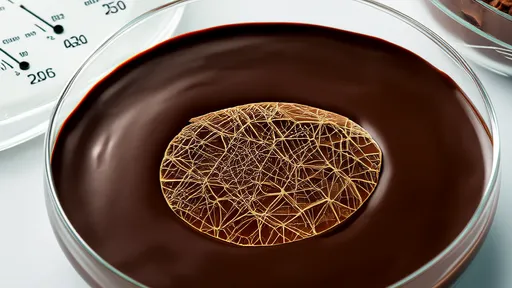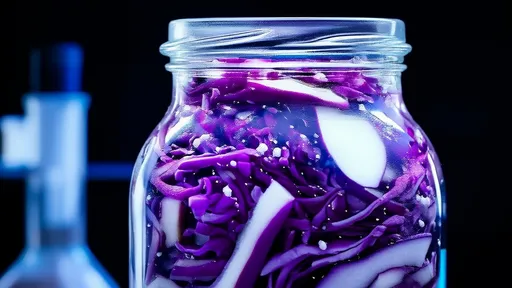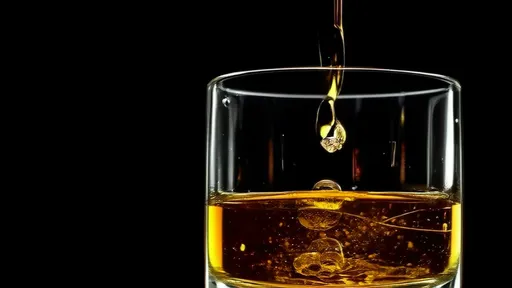The phenomenon of "wine legs" or "tears of wine" has captivated drinkers and scientists alike for centuries. When a glass of wine or spirit is swirled, droplets form on the inside of the glass, creating mesmerizing streaks that slowly trickle back down. This elegant display isn’t just a sign of a good drink—it’s a fascinating interplay of fluid dynamics, surface tension, and evaporation.
At the heart of this phenomenon lies the concept of surface tension. Alcohol, particularly ethanol, has a lower surface tension than water. When wine or a high-proof spirit is swirled, a thin film of liquid coats the interior of the glass. As the alcohol in this film evaporates faster than the water, the remaining liquid becomes more water-rich, increasing its surface tension. This shift creates a gradient that pulls liquid upward along the glass in a process known as the Marangoni effect.
The Marangoni effect is a fluid dynamic principle where liquid flows from regions of lower surface tension to higher surface tension. In the case of wine legs, the alcohol-rich liquid near the top of the film evaporates quickly, leaving behind a water-dominant layer with higher surface tension. This imbalance causes the liquid to climb the glass until gravity overcomes the surface tension forces, leading to the formation of droplets that eventually fall back into the drink.
Interestingly, the viscosity of the liquid also plays a crucial role. Thicker liquids, such as fortified wines or aged spirits, tend to form slower-moving, more pronounced legs. This is because viscosity resists the pull of gravity, allowing the droplets to cling to the glass longer before succumbing to their weight. Conversely, lighter wines with lower alcohol content may produce fewer or quicker tears due to their lower viscosity and weaker Marangoni-driven flow.
Temperature and humidity further influence this phenomenon. Warmer environments accelerate alcohol evaporation, intensifying the surface tension gradient and potentially creating more dramatic legs. Conversely, in highly humid conditions, evaporation slows, weakening the effect. This sensitivity to environmental factors makes the observation of wine legs not just a matter of chemistry but also of atmospheric conditions.
While often associated with quality, the presence or absence of legs isn’t necessarily an indicator of a drink’s taste or value. Some high-quality wines exhibit minimal legs due to their balanced composition, while others with higher sugar or alcohol content may display pronounced streaks. Instead of a measure of excellence, the phenomenon serves as a reminder of the intricate physics hidden within everyday experiences.
Beyond wine, the same principles apply to other alcoholic beverages, including whiskey, cognac, and even cocktails. The visual spectacle of legs forming in a glass of bourbon or the slow crawl of droplets in a vintage port all stem from the same delicate balance of evaporation, surface tension, and fluid motion. It’s a universal dance of molecules that transcends beverage categories.
Scientists and sommeliers alike continue to study these effects, not just for their aesthetic appeal but for their implications in fluid dynamics research. Understanding how liquids interact with surfaces under varying conditions has applications in industries ranging from coatings and adhesives to pharmaceuticals. The humble wine glass, it turns out, is a miniature laboratory for observing fundamental physical processes.
Next time you swirl a glass and watch the tears form, take a moment to appreciate the invisible forces at work. What appears as a simple indulgence is actually a showcase of nature’s precision—where chemistry, physics, and a bit of artistry converge in your hand. The beauty of wine legs isn’t just in their appearance but in the silent, scientific poetry they represent.
The art of unlocking the full potential of spices lies in a time-honored technique: dry-roasting, crushing, and coaxing out their essential oils. This ancient method, passed down through generations of culinary masters, transforms ordinary spices into aromatic powerhouses that elevate dishes to extraordinary heights. The process may seem simple at first glance, but mastering it requires patience, precision, and an understanding of how heat interacts with different spice varieties.
For many home cooks and professional chefs, peeling and cutting yams can be an unexpectedly unpleasant experience. The vegetable, known for its nutritional benefits and culinary versatility, has a notorious side effect – it can leave your hands unbearably itchy. This common kitchen woe has led to numerous home remedies and old wives' tales, but one surprising solution has emerged from modern technology: the microwave.
The art of making dumplings is a cherished tradition in many cultures, particularly in Chinese cuisine. While the filling often steals the spotlight, the dough wrapper plays an equally crucial role in ensuring the dumplings hold together during cooking. One of the most effective yet underrated techniques for preventing dumpling wrappers from tearing is incorporating egg whites into the dough. This method leverages the science of proteins to create a more resilient and elastic wrapper, capable of withstanding the rigors of boiling or steaming without falling apart.
In kitchens around the world, cooks face a common nemesis when preparing pasta: sticky noodles that clump together into an unappetizing mass. While many swear by the traditional method of rinsing cooked pasta with cold water to prevent sticking, a growing number of culinary experts argue that tossing freshly boiled noodles with olive oil proves far more effective. This technique not only preserves the pasta's ideal texture but also enhances its flavor profile in ways cold water simply cannot match.
Guangdong lychee, a jewel of southern China's fruit basket, has long been celebrated for its succulent flesh and floral aroma. Beyond its irresistible taste, recent research has uncovered a hidden treasure within its vibrant red peel—polyphenols with remarkable antioxidant properties. These compounds are quietly revolutionizing our understanding of how this tropical fruit may contribute to human health far beyond basic nutrition.
The high-altitude coffee farms of Yunnan Province have long been celebrated for producing beans with a distinctive flavor profile. Among the many factors influencing taste, altitude plays a particularly crucial role, especially when it comes to acidity. Unlike the bright, sharp acidity often associated with African coffees, Yunnan’s beans exhibit a more nuanced relationship between elevation and tartness—one that defies simple expectations.
The tender crunch of Zhejiang bamboo shoots has long captivated gourmets and scientists alike, their delicate texture standing as a testament to nature's perfect engineering. While chefs praise their culinary versatility, researchers have uncovered a fascinating cellular secret behind their remarkable freshness – turgor pressure. This biological phenomenon, often overlooked in discussions of vegetable quality, holds the key to understanding why these spring delicacies from China's eastern province maintain their youthful crispness long after harvest.
The Hami melon, a jewel of Xinjiang's agricultural bounty, owes its legendary sweetness to a climatic phenomenon as ancient as the Silk Road itself. Nestled in the arid embrace of China's northwest, this golden-fleshed fruit has thrived for centuries under skies that scorch by day and chill by night. What appears as hardship to most crops becomes the secret alchemy transforming ordinary melons into saccharine masterpieces.
The vast fields of Northeast China, stretching across latitudes from 40°N to 50°N, have long been celebrated as the heartland of soybean production. Among the many factors influencing soybean quality, protein content stands out as a critical metric, not just for nutritional value but also for industrial applications. Recent studies have unveiled a fascinating pattern: the protein content in Northeast soybeans exhibits significant variation along latitudinal gradients. This discovery has sparked renewed interest in understanding how geography shapes the very fabric of this agricultural staple.
The process of homogenization in ice cream mix preparation plays a pivotal role in achieving the desired texture, stability, and mouthfeel of the final product. At the heart of this process lies the principle of fat emulsification, where milk fat globules are broken down into smaller, more uniform particles. This not only enhances the emulsion's stability but also ensures a smoother consistency in the ice cream. The science behind homogenization parameters is both intricate and fascinating, as it directly influences the quality of the end product.
The phenomenon of bread staling has puzzled bakers and food scientists for generations. While most consumers associate staleness with dryness, the underlying mechanisms involve complex interactions between starch retrogradation and water migration within the bread matrix. This intricate dance between moisture and crystalline structures ultimately determines whether your morning toast will delight or disappoint.
The formation of rock sugar crystals is a fascinating interplay of chemistry and physics, where the delicate balance of supersaturation dictates the birth and growth of crystalline structures. At its core, this process hinges on the creation of nucleation sites—tiny clusters of molecules that serve as the foundation for larger crystals. The journey from syrup to shimmering rock sugar is anything but straightforward, and understanding the factors that influence nucleation can unlock greater control over crystal size, clarity, and yield.
The art of chocolate tempering is a delicate dance of temperature control, one that hinges on the precise crystallization of cocoa butter. This process is not merely a technical step in chocolate production; it is the very heart of what gives chocolate its signature snap, glossy sheen, and melt-in-the-mouth texture. Without proper tempering, chocolate can appear dull, develop a grainy texture, or fail to release cleanly from molds. The secret lies in understanding how cocoa butter behaves under varying thermal conditions.
The science behind pickling vegetables has fascinated food chemists and home cooks alike for centuries. While the process may seem straightforward – submerging vegetables in brine – the molecular dance occurring within each cell reveals a complex interplay of chemistry and physics. Recent advances in sodium ion detection techniques have allowed researchers to map the distribution of salt throughout pickled vegetables with unprecedented precision, shedding new light on this ancient preservation method.
The phenomenon of "wine legs" or "tears of wine" has captivated drinkers and scientists alike for centuries. When a glass of wine or spirit is swirled, droplets form on the inside of the glass, creating mesmerizing streaks that slowly trickle back down. This elegant display isn’t just a sign of a good drink—it’s a fascinating interplay of fluid dynamics, surface tension, and evaporation.
